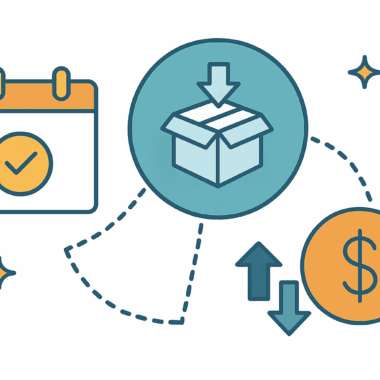

Subscription Economy & Affiliate Marketing: Commission Models for Retention-Based Businesses

Content:
- The Rise of the Subscription Economy
- How Affiliate Marketing Fits into Recurring Revenue Models
- Commission Models in Subscription Affiliate Programs
- Tracking Retention and Customer Lifetime Value
- Strategies for Retention-Focused Affiliate Programs
- Technology Enablers: Platforms and Automation
- Conclusion
- Frequently Asked Questions (FAQ)
The global economy is increasingly driven by recurring revenue models. From SaaS platforms to streaming services and monthly subscription boxes, the subscription economy continues to reshape how consumers interact with brands. This transformation has profound implications for marketing strategies, particularly within affiliate programs that were traditionally designed around one-time transactions.
In this new environment, affiliate marketing must evolve to reflect customer lifetime value rather than short-term conversions. Retention-based businesses rely on loyalty, engagement, and continuous relationship management. As a result, affiliates are becoming long-term partners in the customer retention process rather than just lead generators. Understanding commission models that reward retention is now essential for both affiliates and brands.
The Rise of the Subscription Economy
The subscription economy has experienced exponential growth over the past decade. According to data from Zuora, subscription-based companies grew nearly five times faster than the S&P 500 between 2012 and 2024. Consumers increasingly value flexibility, personalization, and continuous access to products or services, rather than ownership.
Key drivers include digital transformation, recurring payment infrastructure, and predictive analytics that allow companies to optimize customer retention. As the market evolves, businesses across sectors—media, fintech, health, and retail—are embracing subscriptions to build predictable revenue streams and enhance customer relationships.
Consumer behavior trends fueling this shift:
- Preference for convenience and auto-renewal models
- Trust in personalized experiences
- Growing demand for value-added continuity services
- Shift from transactional loyalty to experiential loyalty
How Affiliate Marketing Fits into Recurring Revenue Models
Traditional affiliate programs reward a single sale through a Cost Per Acquisition (CPA) model. However, in the subscription economy, success depends on retaining customers over multiple billing cycles. This makes one-time commissions insufficient to incentivize affiliates who drive high-quality, long-term subscribers.
To align affiliate incentives with retention goals, brands are adopting hybrid and recurring commission models. Affiliates now earn based on customer lifetime value, renewal rates, or churn reduction. This approach transforms affiliates into retention partners who share responsibility for sustaining engagement and minimizing cancellations.
The new affiliate value chain includes:
- Customer acquisition through trusted content and influencers.
- Retention support through education and user onboarding.
- Continuous advocacy to reduce churn and build community loyalty.
Commission Models in Subscription Affiliate Programs
Retention-based businesses require adaptive commission models that reward affiliates for sustained performance. Below are the most effective structures being used across industries in 2026.
|
Commission Model |
Description |
Ideal Use Case |
| Recurring Commissions | Affiliates earn a percentage of every subscription renewal over time. | SaaS, streaming services, education platforms |
| Lifetime Value (LTV) Commissions | Payments are tied to the total revenue generated by a referred customer. | Premium software, B2B solutions |
| Tiered Models | Higher rates for affiliates who retain more subscribers or generate higher LTV. | Subscription boxes, e-commerce |
| Hybrid Models | Combines upfront CPA with recurring percentage-based rewards. | Mixed-revenue digital platforms |
| Performance Bonuses | Rewards affiliates for reducing churn or improving subscription duration. | Streaming, online fitness, education |
The optimal commission structure depends on the business model and customer lifecycle length. Recurring or LTV-based systems work best for SaaS and digital platforms, while hybrid models are suitable for businesses balancing immediate and long-term goals. Tiered structures encourage affiliates to focus on quality leads rather than volume.
Performance bonuses are an emerging practice that bridges marketing and customer success. By rewarding affiliates for retention metrics, companies strengthen collaboration and ensure consistent value delivery throughout the subscription period.
Tracking Retention and Customer Lifetime Value
Accurate tracking of Customer Lifetime Value (LTV) and retention rates is crucial to managing affiliate programs in the subscription economy. Advanced tracking platforms and CRM integrations provide visibility into renewal behavior, upgrade frequency, and churn probability.
Brands rely on data-driven attribution models to link affiliate activity with long-term revenue. Predictive analytics, powered by AI, identify which affiliates attract customers who stay longer and spend more. This information is used to adjust commission rates dynamically and optimize affiliate partnerships.
Key retention metrics to monitor:
- Churn Rate
- Renewal Rate
- Average Subscription Duration
- Customer Lifetime Value (LTV)
- Monthly Recurring Revenue (MRR)
Strategies for Retention-Focused Affiliate Programs
Building a retention-oriented affiliate program requires collaboration and transparency. Affiliates should have access to data and resources that enable them to influence customer satisfaction after acquisition.
Effective retention strategies include:
- Incentivize affiliates for customers with low churn rates.
- Provide access to customer success materials such as guides and onboarding videos.
- Implement loyalty-based bonuses for affiliates maintaining high renewal performance.
- Share performance dashboards to align brand and affiliate KPIs.
These initiatives transform affiliates into advocates who not only generate leads but also support customer success, extending the revenue cycle.
Technology Enablers: Platforms and Automation
The integration of automation and analytics tools is fundamental for scaling affiliate programs in subscription-based businesses. Modern platforms such as Impact, PartnerStack, and Tapfiliate provide end-to-end management, tracking, and payment automation.
Artificial Intelligence and machine learning models enhance retention analysis by predicting churn and identifying engagement patterns. Automated payout systems ensure timely rewards and transparency, reducing administrative friction while improving trust between brands and affiliates.
Conclusion
The intersection of the subscription economy and affiliate marketing represents a pivotal shift from transactional to relationship-based growth. Success now depends not only on customer acquisition but on sustained engagement and retention performance.
Brands that implement flexible, retention-driven commission models build stronger partnerships and achieve predictable long-term growth. As the market matures, affiliates who focus on value creation and customer loyalty will become indispensable assets in the subscription ecosystem.
Frequently Asked Questions (FAQ)
1. How are recurring commissions different from standard CPA models?
Recurring commissions reward affiliates for ongoing customer renewals, while CPA models provide a one-time payout for initial conversions.
2. Which industries benefit most from subscription-based affiliate programs?
Industries like SaaS, media streaming, education, and digital services see the highest returns from subscription-focused affiliate models.
3. How do brands prevent churn while rewarding affiliates?
By aligning affiliate incentives with retention goals, offering bonuses for long-term customers, and sharing real-time performance data.
4. What tools help measure retention in affiliate marketing?
CRM-integrated platforms and AI analytics tools like PartnerStack or Impact track renewals, churn, and LTV across affiliate channels.
5. Are hybrid commission models more profitable for affiliates and brands?
Hybrid models balance short-term payouts with long-term sustainability, making them attractive for both parties seeking recurring revenue growth.

Best Practices for Managing iGaming Affiliates at Scale
This guide distills field-tested practices into an operating playbook. Each section describes what to automate, which metrics to monitor, and how to enforce governance without slowing growth. Use it to move from ad-hoc coordination to a system that handles more partners, more brands, and more geographies with fewer errors.

Comparison of the Top 15 Affiliate Software Solutions for the iGaming Industry
This article evaluates 15 top-tier affiliate platforms, offering insights into their architecture, feature sets, and pricing transparency. The goal is to guide iGaming operators—whether startups or established brands—toward data-driven decisions. Tools such as a casino affiliate software or gambling affiliate marketing software can provide the performance analytics operators need.

How to Scale Your Affiliate Program with Automation Tools
This guide outlines a practical blueprint for automating the full lifecycle—strategy, tracking & attribution, recruitment, enablement, commissioning, compliance, and fraud prevention. Each section specifies what to automate, how to measure outcomes, and where to add guardrails. The result is a defensible operating model that scales across seasons, markets, and product lines.



